The week at a glance
- Vega Gull seen briefly again in County Wexford
- Glaucous-winged Gull still in County Cork
- Apparent Thayer's Gull in Aberdeenshire
- Hudsonian Whimbrel lingers in Cornwall
- Pacific Divers in Cornwall and County Galway
- First Siberian Rubythroat for the Netherlands
- Striped Crake and Allen's Gallinule in Spain
After the excitement of last week the past seven days quietened down considerably and, although the volume of news was still high (we put out 538 reports on Sunday), the species composition was a little more routine. So it was no great surprise that at least some British birders became green with envy at news from overseas — a bustling week around the Western Palearctic produced several superb records.
Last week's headline bird, the Irish Vega Gull, proved nothing short of a nightmare for prospective twitchers. Seen again by a lucky few at Duncannon harbour three times during the course of Wednesday, subsequent searching by both Irish and British birders drew a blank and it hasn't been seen since. Some diehard souls spent several days on site — enough to make many question their hobby, or even sanity! Read Killian Mullarney's fantastic account of the discovery here.
Some consolation for anyone visiting southern Ireland was the continued presence of the Glaucous-winged Gull at Castletownbere, Co Cork, all week — it seems particularly settled and may well be around for some time. There was no sign of last week's Brünnich's Guillemot in Orkney, and Shetland's Mourning Dove was last seen flying off from its favoured gardens in Lerwick in mid-morning on 15th — will it follow the Oriental Turtle Dove to the Faroe Islands?

Glaucous-winged Gull, Castletown Bearhaven, Cork (Photo: Nick Watmough)
The Hudsonian Whimbrel continued to commute between Marazion and Perranuthnoe, spending more time at the latter after it was first picked up there on 16th. The Pacific Diver was also still offshore there, ranging from Perranuthnoe as far west as Newlyn, and another was again noted off Tawin, Co Galway, on 19th.
Two White-billed Divers were in Bluemull Sound, Shetland, on 17th and the adult was again reported on South Ronaldsay, Orkney, on 16th — the first time since New Year's Day.

White-billed Diver, Bluemull Sound, Shetland (Photo: Brydon Thomason)
A female King Eider was discovered off Rosslare Backstrand, Co Wexford, on 14th and was still there several days later; another female was seen in the Sound of Harris from the Leverburgh–Berneray ferry on 15th and the long-stayer remained off Ruddon's Point, with the drake Surf Scoter also still at the latter site.

King Eider, Rosslare, Wexford (Photo: Paul Kelly)
An adult drake Black Scoter off Kinshaldy, Fife, on 15th is presumably the same bird seen at various sites in Scotland and North-East England in recent years; three drake Surf Scoters were off there on 16th and other drakes were new in at Bay of Kirkwall, Orkney, on 16th and St Mary's, Scilly, from 16th. Further birds remained in Lothian (2), North Yorkshire and Shetland.

Surf Scoter, at sea, Isles of Scilly (Photo: Joe Pender)
The drake Lesser Scaup returned to Cardiff from 13th, alternating between the Bay and Cosmeston Lakes thereafter. Further males remained in Cornwall and on Shetland. Another decent showing of Ring-necked Duck saw nine recorded, including a new first-winter drake at Carlingwark Loch, Dumfries & Galloway, on 19th. The male at Carrowmore Lake, Co Mayo, was reported on 13th for the first time since October; this is probably the same male first seen here in winter 2006-07. Apart from the colour-ringed presumed escape in Berkshire, the only Ferruginous Duck was the long-staying drake at Blashford Lakes, Hants.
The presence of a drake American Wigeon at Inny Estuary, Co Kerry, was confirmed on 16th after a "possible" here in December, and another was found at Tramore, Co Waterford. A third was discovered at Hesketh Out Marsh, Lancs, on 16th and others were still in Devon, Northumberland, Co Wexford and the Outer Hebrides. At least a dozen Green-winged Teal included at two or more still on Loch of Skaill, Orkney, and new birds in Staffordshire (Belvide Reservoir on 13th; Aqualate Park on 16th), Somerset (Steart on 16th), South Uist and Nottinghamshire (Idle Valley on 18th). The wintering Garganey was still at Eakring Flash, Notts.

Green-winged Teal, Loch Bee, South Uist, Outer Hebrides (Photo: Steve Duffield)
An adult Red-breasted Goose was found among Dark-bellied Brents at Deal Hall, Essex, on 13th and was then seen at Foulness Island on 17th. The four Snow Geese again roosted overnight at Loch of Skene, Aberdeenshire, on 16th, and the white morph was still in Cumbria on 13th. Black Brants were recorded in Devon, Hampshire and Lincolnshire.
A Cattle Egret was at Deeping Lakes, Lincs, on 13th but not again; elsewhere two remained in Somerset and one in Devon, while the Suffolk bird continued to perform well at Iken to 18th. One remained at Tacumshin, Co Wexford, and a new bird was found near Limerick City on 16th (and was still there on 18th).
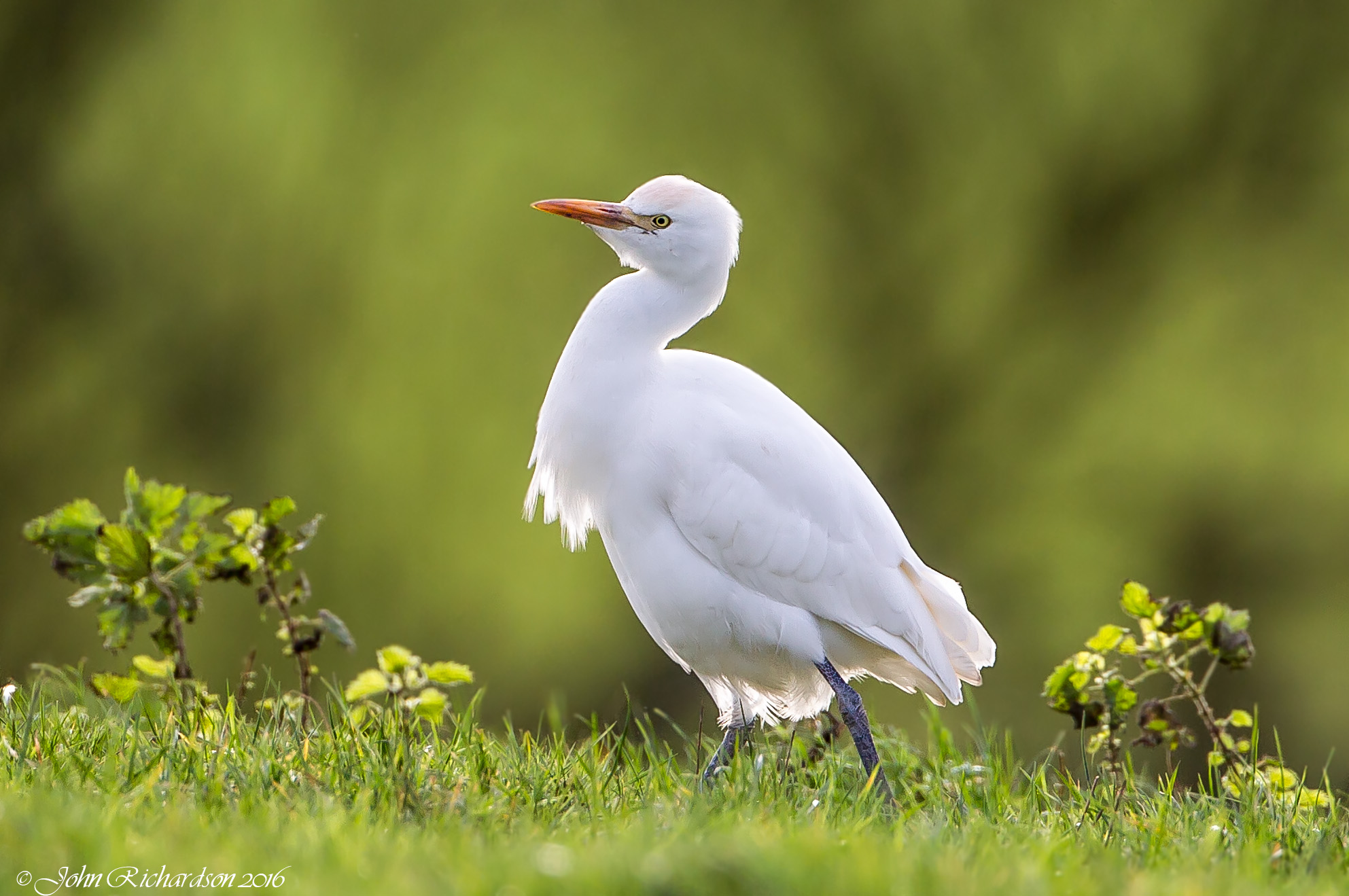
Cattle Egret, Iken, Suffolk (Photo: John Richardson)
Glossy Ibis were reported from 18 sites, the peak count again being 14 at Castlemartyr, Co Cork, from 17th after five arrived there on 14th. Several other groups were reported from around Ireland, with Counties Down, Wicklow, Limerick, Kerry, Cork and Waterford all holding birds. Four flew over Llanelli, Carmarthenshire, on 13th and other British records were received from Suffolk, East Sussex and Devon.

Glossy Ibis, Pett Level, East Sussex (Photo: Mali Halls)
Two further reports of white-morph Gyr Falcon presumably relate to the same bird — at the north end of Loch Bee on 13th and then at Bornish on 18th. The juvenile Pallid Harrier continued to frequent the Flitcham area of Norfolk throughout the week but wasn't seen on 17th — coincidentally the day a juvenile was photographed at Lakenheath Fen, Suffolk, though photographs suggest that the Lakenheath bird is probably a different individual. Norfolk retained the lion's share of Rough-legged Buzzards, but there were also records from Essex, Northumberland and Shetland.
The Lesser Yellowlegs was again at Burgh Castle, Norfolk, from 17th — the first reports for a couple of weeks. The Long-billed Dowitcher was seen again regularly at Pennington Marshes, Hants, from 16th and the Northumberland bird was present throughout.

Lesser Yellowlegs, Burgh Castle, Norfolk (Photo: Peter Birtchnell)
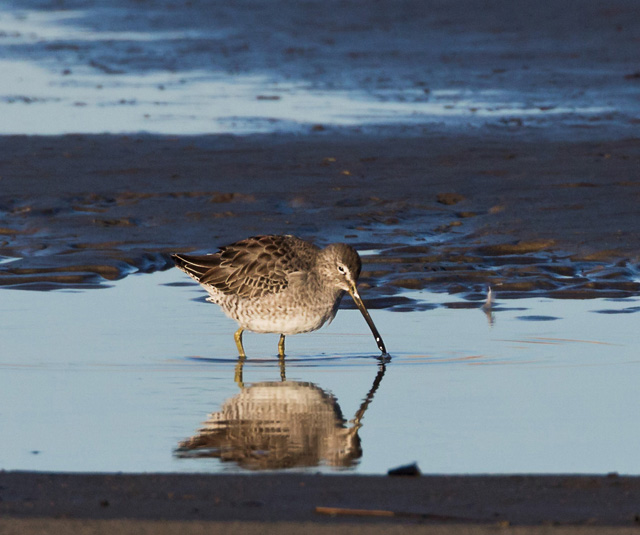
Long-billed Dowitcher, Cresswell, Northumberland (Photo: Antony Ward)
A very good candidate for a juvenile Thayer's Gull was unearthed at Donmouth, Aberdeenshire, late on 19th — growing awareness seems to be rendering this taxon an almost expected annual occurrence. Cornwall's American Herring Gull was again near St Just on 14th, while the adult Bonaparte's Gull continued to be seen at Wilstone Reservoir, Herts, to 16th; the adult also remained in Devon. Ring-billed Gulls were recorded at 18 sites and included an impressive five at Nimmo's Pier, Co Galway, on 16th, the highest total reported from this traditional site in some time. At least two were also in Cork City and at least three around Tralee, Co Kerry. White-winged gull numbers remained on a par with the previous week, though there is growing evidence that more birds are now spreading inland and many local gulling hotspots across the interior of England held birds this week. These included several Kumlien's Gulls, including a juvenile in West Yorkshire and a near-adult at Hornsea Mere, E Yorks — this latter bird perhaps a returning bird to the Holderness coastline.

Bonaparte's Gull (right, with Black-headed Gull), Wilstone Reservoir, Hertfordshire (Photo: Ian Williams)
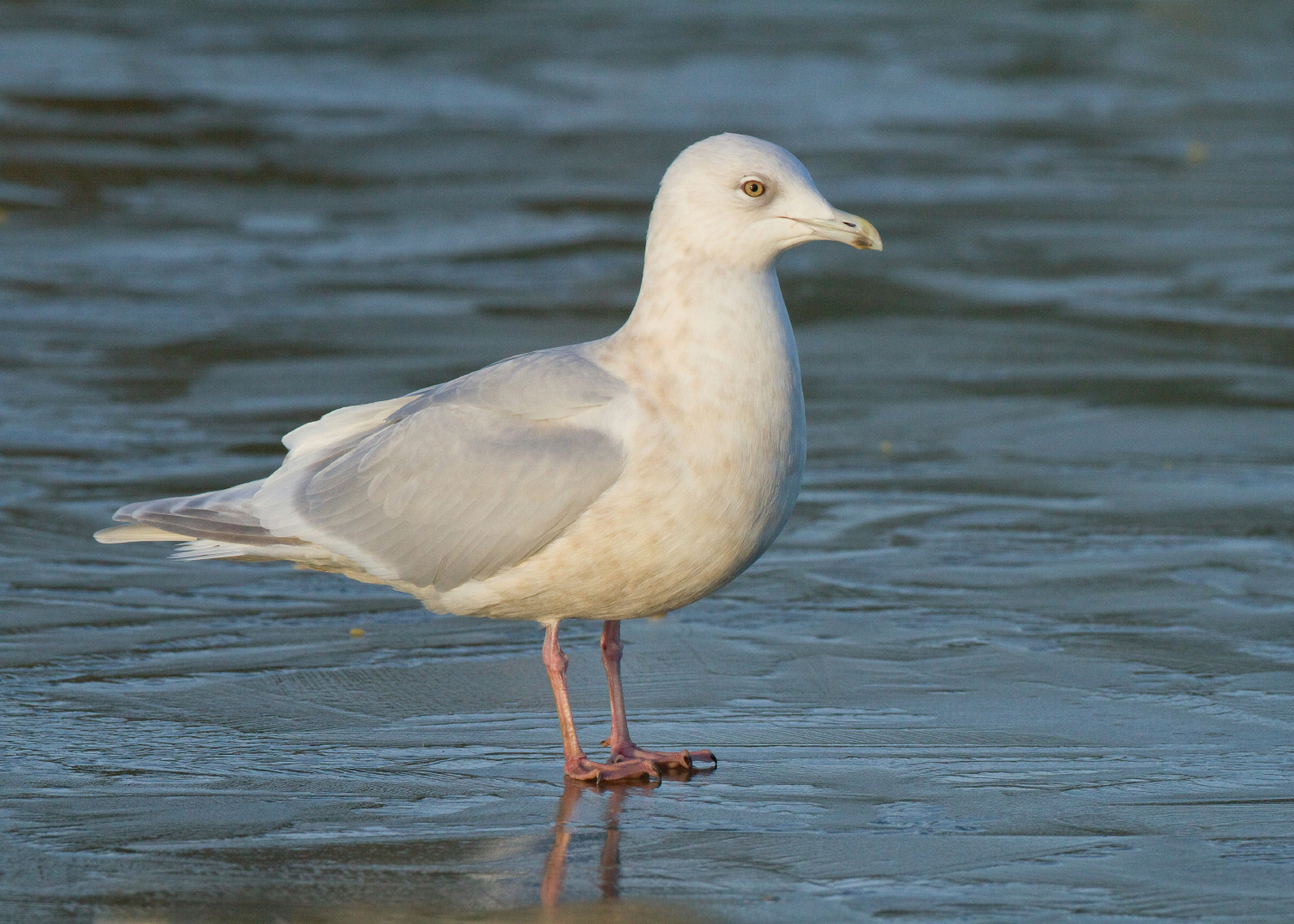
Kumlien's Gull, Hornsea Mere, East Yorkshire (Photo: Vince Cowell)
The Hoopoe didn't react adversely to the colder conditions this week and remained at Wall Heath, Staffs, throughout. Trios of Shore Larks all remained present and correct at two sites in Norfolk and at Hartlepool, Cleveland; the singleton was still on Sheppey, Kent.
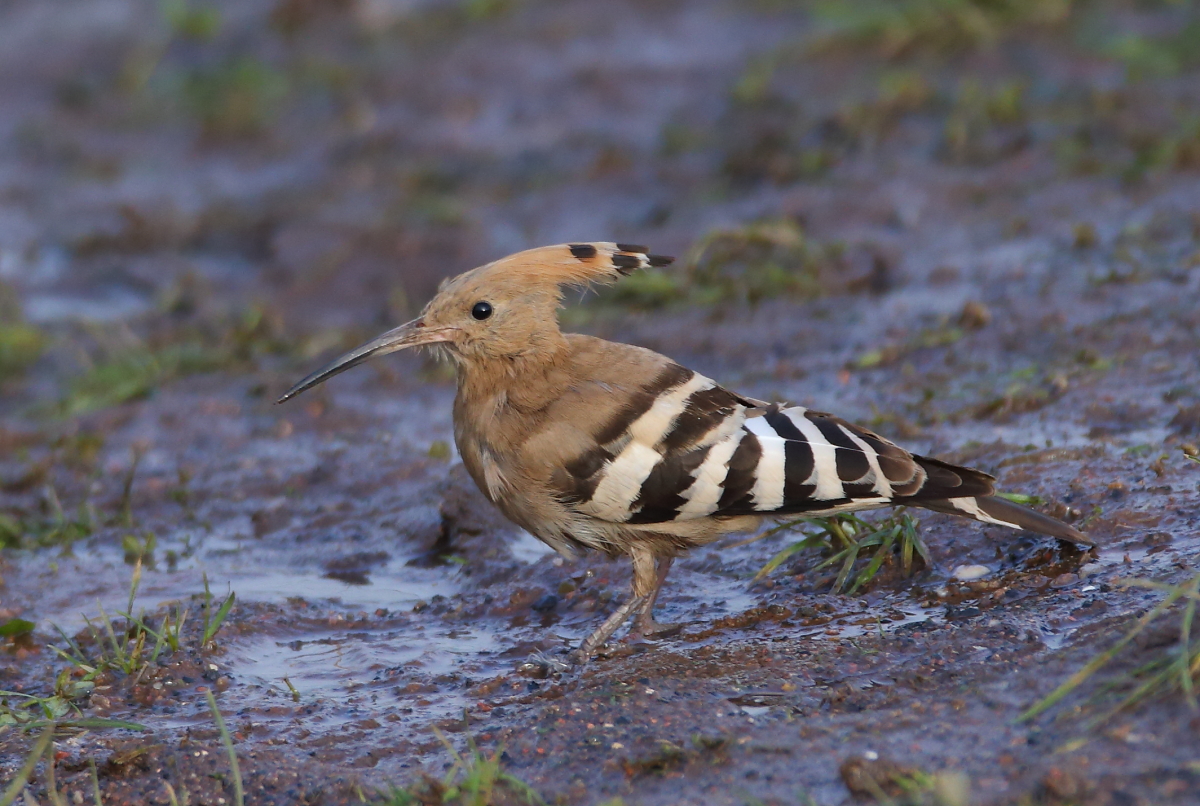
Hoopoe, Hinksford, Staffordshire (Photo: Chris Cook)
Also on Sheppey, the Richard's Pipit remained at Swale Nature Reserve, while the recent duo at Flamborough Head, E Yorks, were impressively joined by a third bird from 15th. The Barn Swallow at Cheddar Reservoir, Somerset, on 13th must have felt a little chilly. Shetland's Black-bellied Dipper continued near Voe and another Dipper was reported on South Ronaldsay on 18th.

Richard's Pipits, Flamborough Head, East Yorkshire (Photo: Andy Hood)
The Dusky Warbler continued at Ham Wall, Somerset, to at least 16th, but the Pallas's Warbler at Heswall, Cheshire, was not reported beyond 13th. A minimum of nine Yellow-browed Warblers included at least five in Cornwall and single birds in Somerset, Hampshire and the Isles of Scilly. The two male Penduline Tits continued to show well to large crowds in Gloucester throughout the week, with up to two still at Dungeness, Kent, and the three at Titchfield Haven, Hants, joined by a fourth individual on 19th.
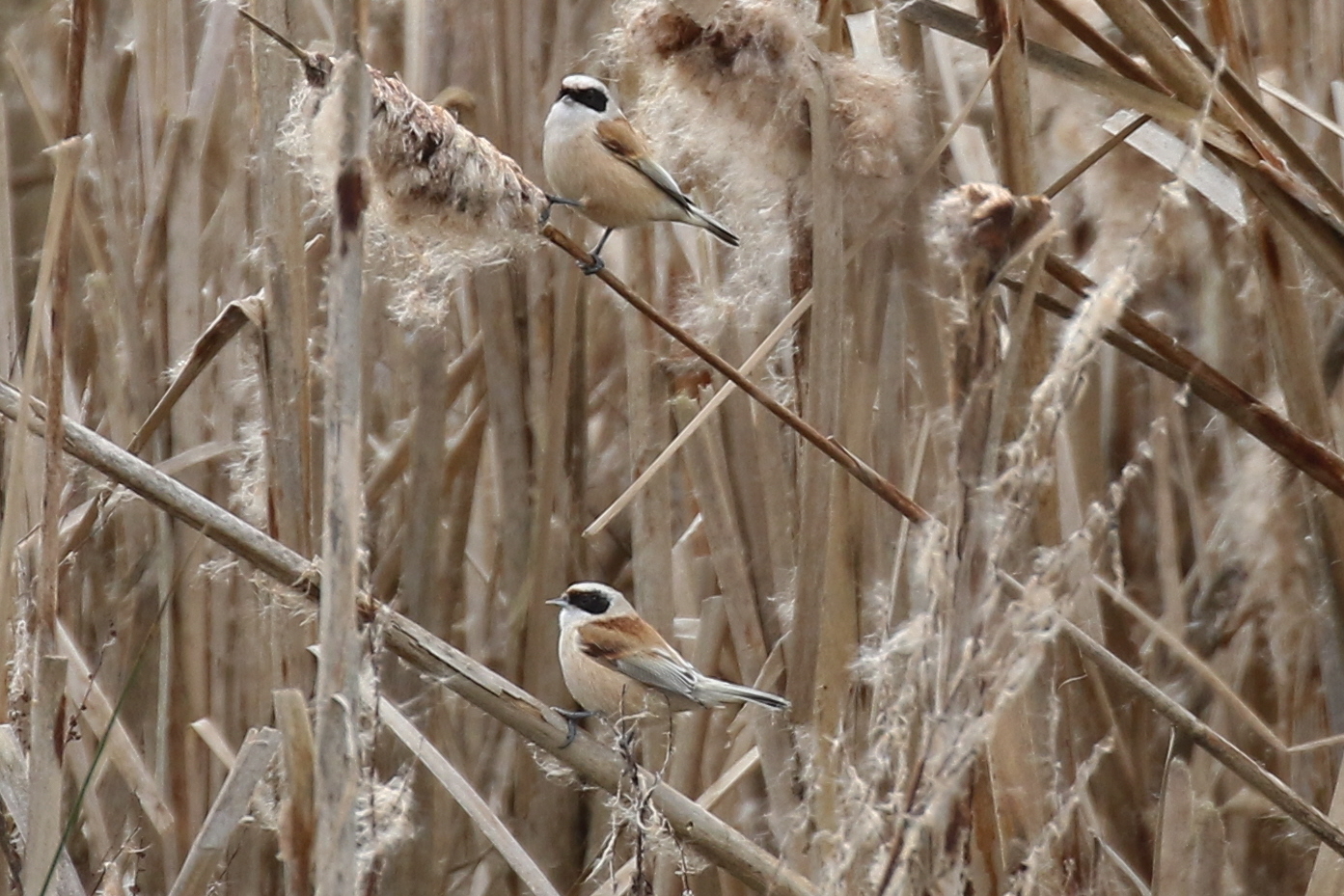
Penduline Tits, Gloucester, Gloucestershire (Photo: Chris Teague)
Found last week, the Coues's Arctic Redpoll continued at Birling Carrs, Northumberland, occasionally showing very well to visitors. Two European Serins continued to oblige at Fen Drayton Lakes, Cambs, throughout the week, and a third individual was discovered near Downham Market, Norfolk, on 17th (and was still there on 19th) — how many more must be lurking undiscovered? A Little Bunting was unearthed from a crop field at Darts Farm, Devon, on 13th, while more of a surprise was a bird on Tory Island, Co Donegal, on 16th.
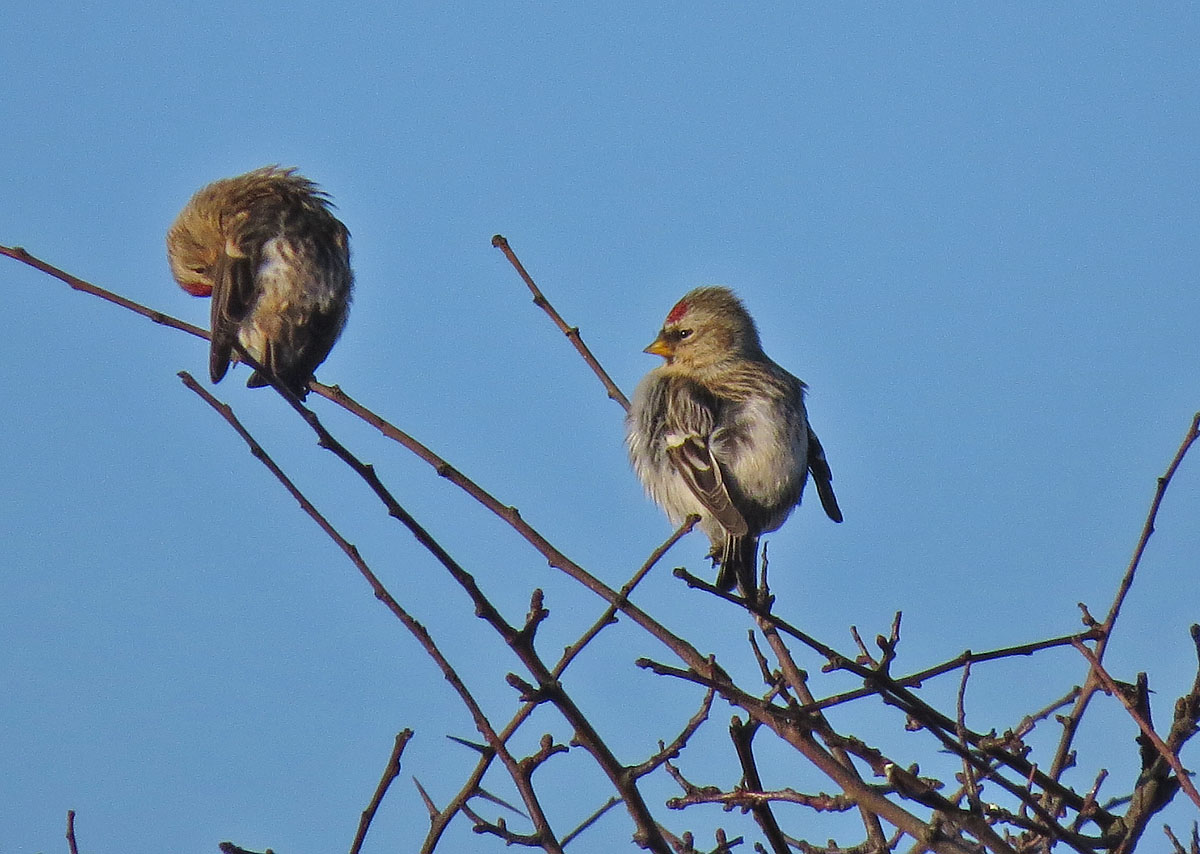
Coues' Arctic Redpoll, Birling Carrs, Northumberland (Photo: Gary Smith)
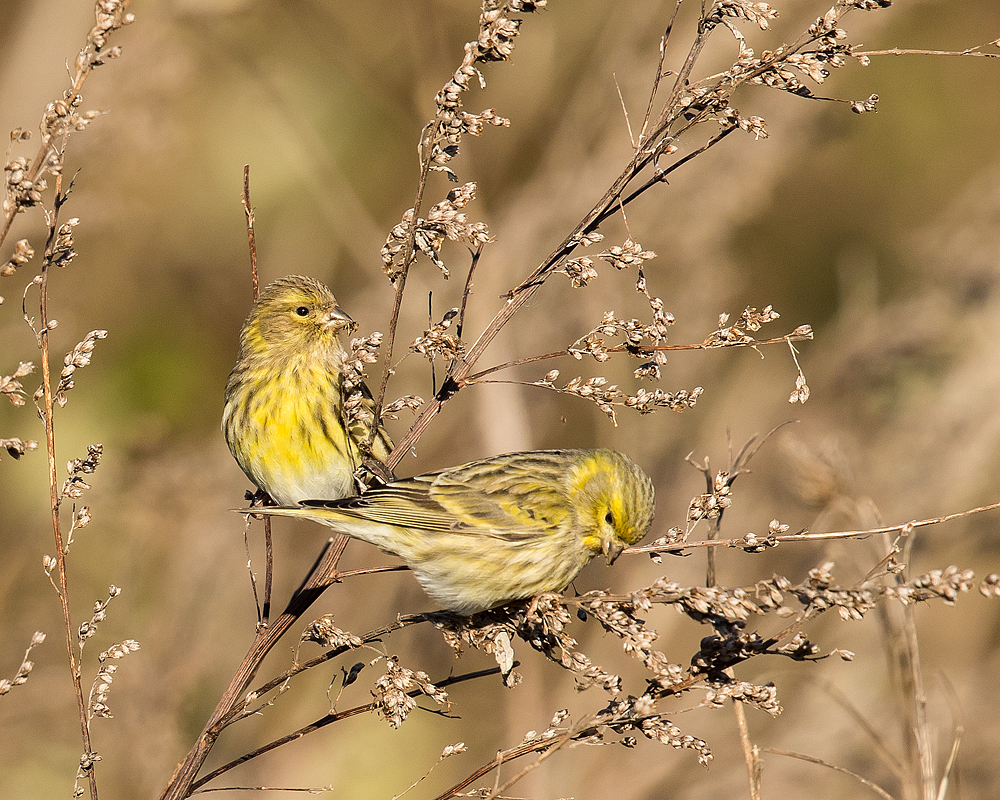
Serin, Fen Drayton Lakes RSPB, Cambridgeshire (Photo: Garth Peacock)
Western Palearctic news
A fantastic week around the Western Palearctic produced a fine range of regional rarities, although it's hard to look past the Netherlands' first Siberian Rubythroat as the highlight of an excellent seven days. Found by non-birders and identified from photos posted on social media on Friday, the bird showed very well to all comers for the remainder of the week in what may well prove the biggest twitch of the Dutch birding year. Given recent occurrences of wintering Red-flanked Bluetails and the increase of rubythroat in western Europe, one could argue that a winter record was due, but to get such a showy bird in a suburban setting is a real treat for Dutch birders.

Siberian Rubythroat, Netherlands (Photo: Martin van der Schalk)
Another potential first for the Netherlands was a Red-billed Tropicbird corpse washed up on Texel on 17th, though it had evidently been dead for some time. The female Pine Bunting continued to show very well at Wilhelminadorp, potentially providing a nice bonus on the way home for any potential rubythroat twitchers from Britain.
Spain's second Striped Crake was found near Córdoba on 13th, but was not seen at all the following day despite extensive searching. A juvenile Allen's Gallinule not too far away at San Pedro de Alcántara from 16th proved somewhat more co-operative, lingering until at least Monday. Spain's first Eyebrowed Thrush was also registered at Castellón, Valencia, on 17th, though it was only discovered as it had been shot and the corpse retrieved (photo here) — a tragic and unnecessary end to what would have been a much-celebrated vagrant.
Striped Crake, Córdoba, Spain (Video: Diego Peinazo)
A new Pine Bunting was discovered in Hordaland, Norway, on Saturday, while the Azure Tit continues to show well in Helsinki — though there is mounting concern that it has impure ancestry, given that the bird appears to show a faint yellow wash to the breast and rather less extensive white in the tail than in typical Azure (though the latter feature at least may be explained by the bird being a first-winter). A Brünnich's Guillemot visited Hanstholm harbour, Denmark, late on 17th.

Azure Tit, Finland (Photo: Mika Bruun)
Romania's first Iceland Gull was near Brasov on 13th, and the Oriental Turtle Dove remained at Tórshavn, Faroe Islands. The Red-billed Teal continued at Hazeva, Israel. After last week's Wood Duck, the pools at Praia da Vitória, Terceira, Azores, continued their good form on 17th by attracting the same pair of Hooded Mergansers seen on Faial earlier in the month.

Hooded Mergansers, Azores (Photo: Andre Vieira)


